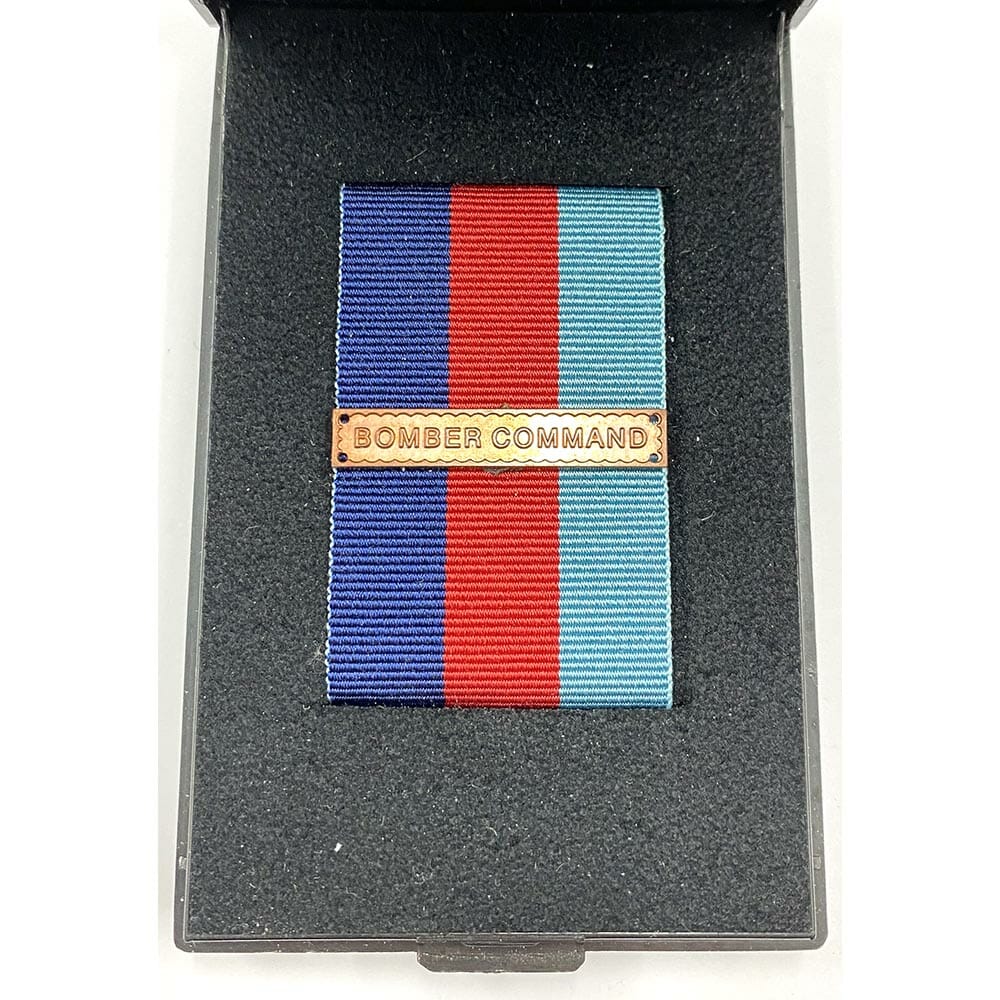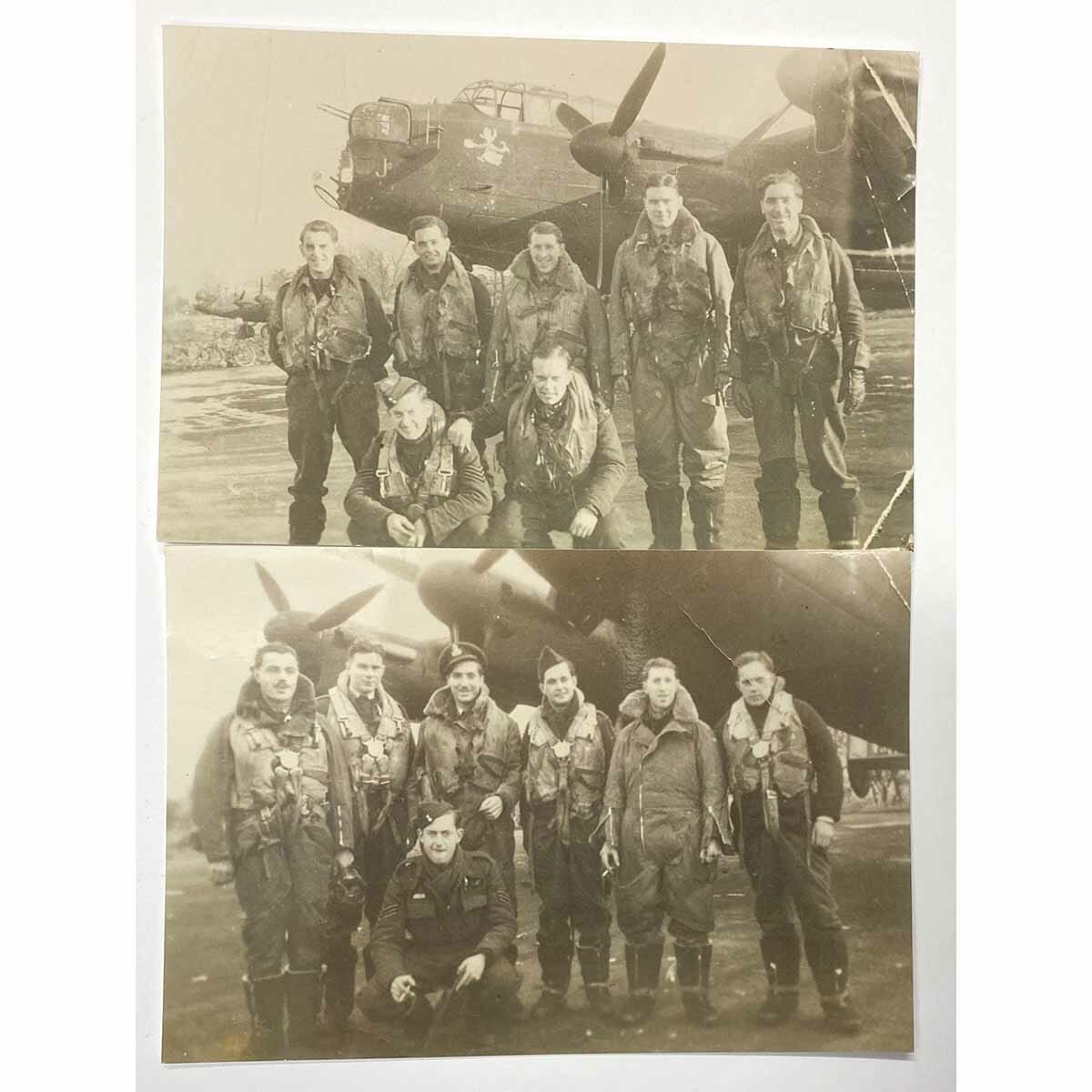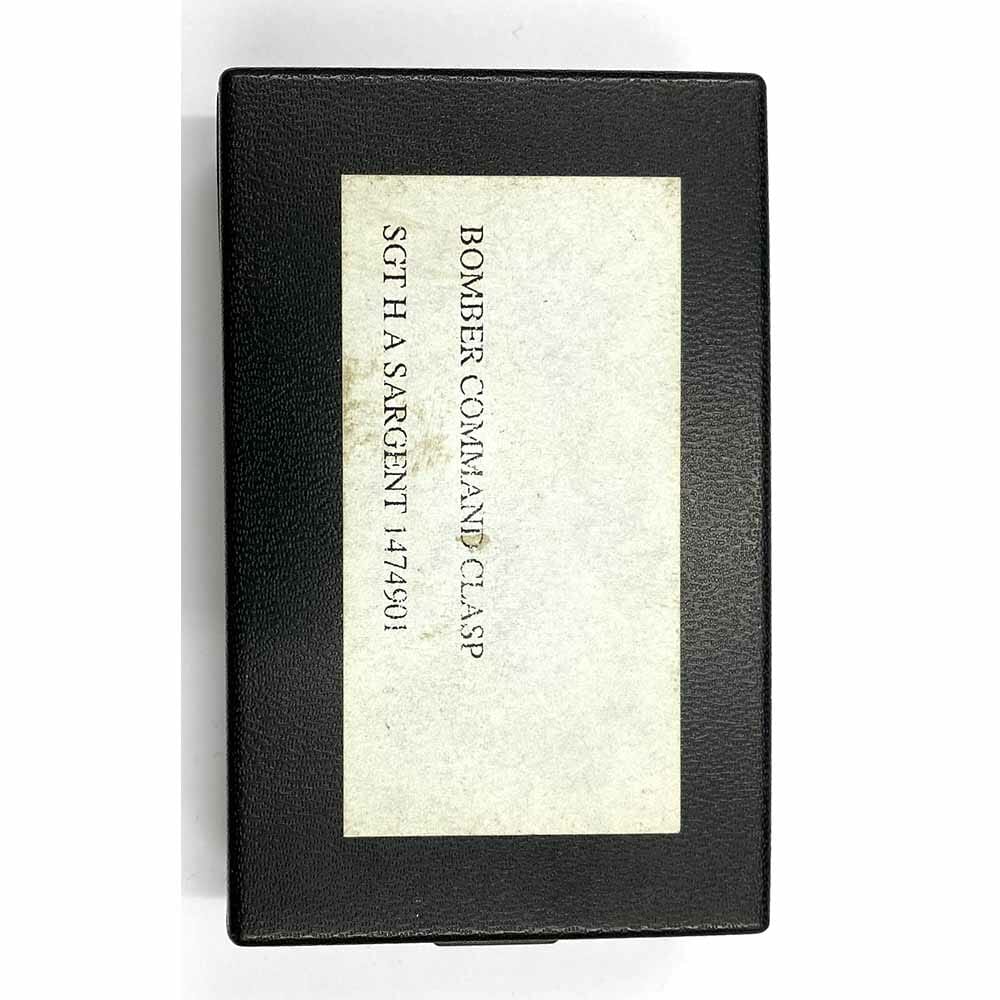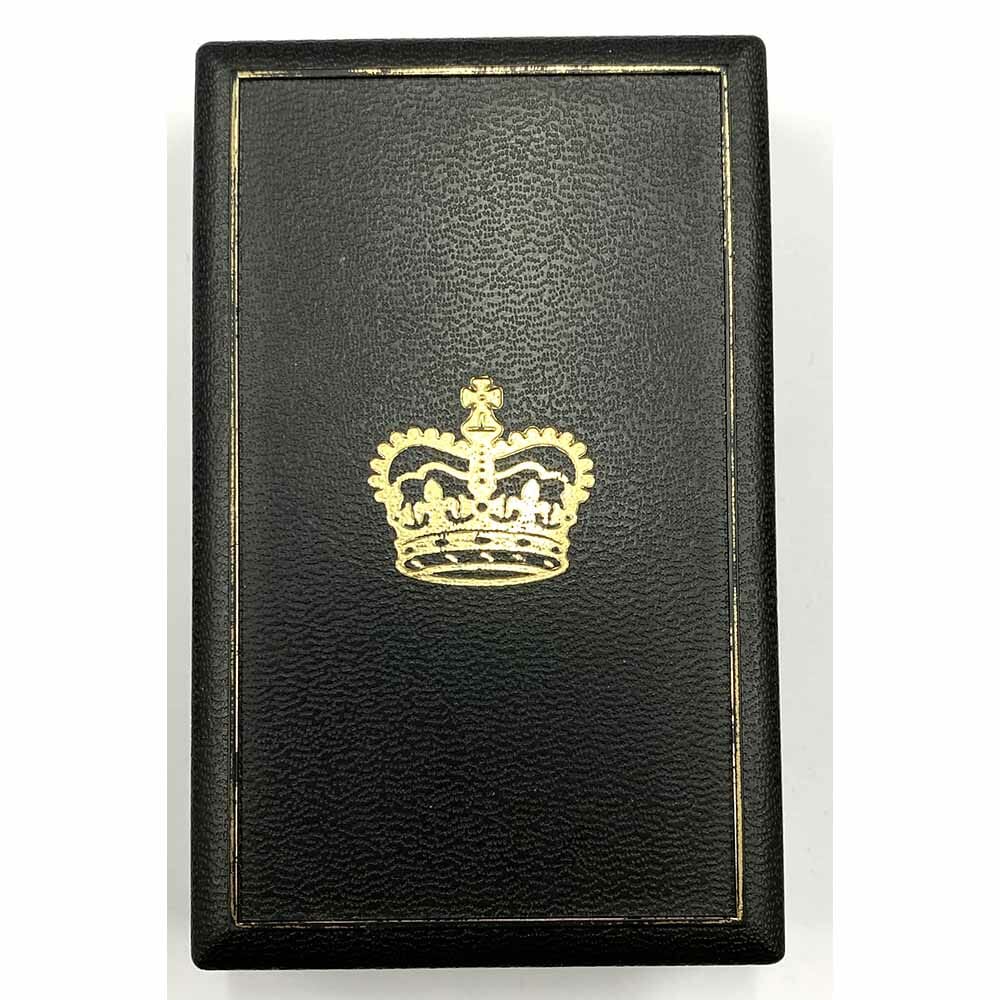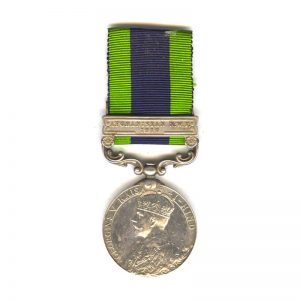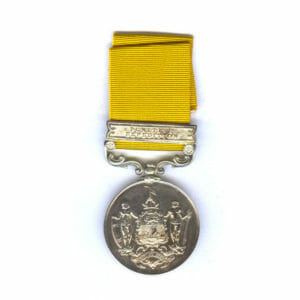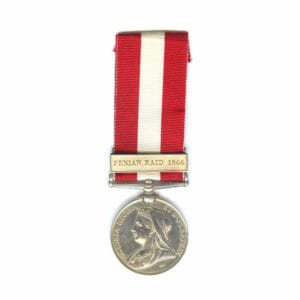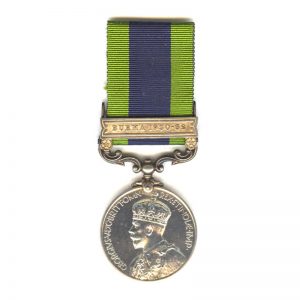Description
Bomber Command Clasp, an original example in labelled box of issue, Sergeant Henry Alfred Sargent, Shot down in a raid on Dortmund, Rhenania Ossag Oil Refinery, 20/21st February 1945.
The bar is a rare original issue, in box of issue, the reverse label reading: “BOMBER COMMAND CLASP SGT H A SARGENT 1474901”.
With 4 copies of original photographs of him, one in his RAF Sergeant’s Uniform, one in full Flight Gear, with 2 group photographs of his crew by their aircraft whilst in his flight suit.
Henry Alfred Sargent was an Air Gunner, as Mid Upper Gunner of Lancaster I NF975 part of 576 Squadron, Royal Air Force.
On the night of 20th February 1945, his crew was tasked with the final bombing operation of the war on Dortmund.
They took off at 21:41 hrs from RAF Fiskterton, the task was to destroy the southern part of Dortmund, more specifically a planned attack on the Rhenania Ossag Oil Refinery in the Reishold District.
It was a large scale attack, with 514 Lancaster Bombers and 14 Mosquitoes flying into Germany.
Overall the mission was a success, but they took casualties, not much can be confirmed about the fate of their aircraft, they never returned home and were all noted as missing and presumed dead, they never showed up later in any prisoner of war camps.
Some research by Aircrewremembered.com with a snippet from the book Nachtjagd War Diaries Volume 2 by Dr Theo E. W. Boiten and Roderick J. Mackenzie reveals that the German Night Fighters were particularly active that night and whilst the British were successful, some of the Night Fighters returned to base to claim their victories.
“It has not been possible to attribute the loss of NF975 at this time. However, against the 25 certain and 2 probably Asbchusse claimed by Night Fighters on this night, only around 20 of the actual RAF Bombers that were lost can be attributed to Night Fighters; an over claiming by some 7 aircraft. Flask was most likely responsible for 2 losses.”
The crew of 7, are now remembered on the Runnymede Memorial.
The crew which had seen action in numerous bombing operations was piloted by Flying Officer Richard Stanley Bastick, they had already bombed Dortmund about 2 times already.
On the day of the flight, they had a standby join them leading to the death of Flight Sergeant Jack Coates, their usual Wireless Operator/Air Gunner, Flight Sergeant Gould had been injured in a previous flight, he was ready to fly again but unfortunately Coates had requested to join the crew in his place to finally “complete his 30”.
A quote from Flight Sergeant Douglas Gould, their crew member who missed his spot that night about his crew:
“Lancaster Finishing School followed at Hemswell, North of Lincoln. We then joined 576 Squadron, based at RAF Fiskerton, close to Lincoln in Late October 1944.
Our first 7 operations included 2 to Dortmund where we received flak damage on both occasions. The 2nd of these, and the most serious, occurred during a daylight operation when a shell burst between the port inner engine and my head and apart from stunning me and knocking out my ear drums reduced us to the use of two engines and myself on emergency procedure on our return trip over the North Sea. A somewhat stressful trip marked by my failure to isolate the IFF from it’s detonator with the result that our heavy landing resulted in a pumpkin shaped IFF box!
As a result of the injuries I received I was grounded for a period during which my crew went tragically missing on their 3rd trip to Dortmund. They have no known grave and are commemorated at Runnymede.”
